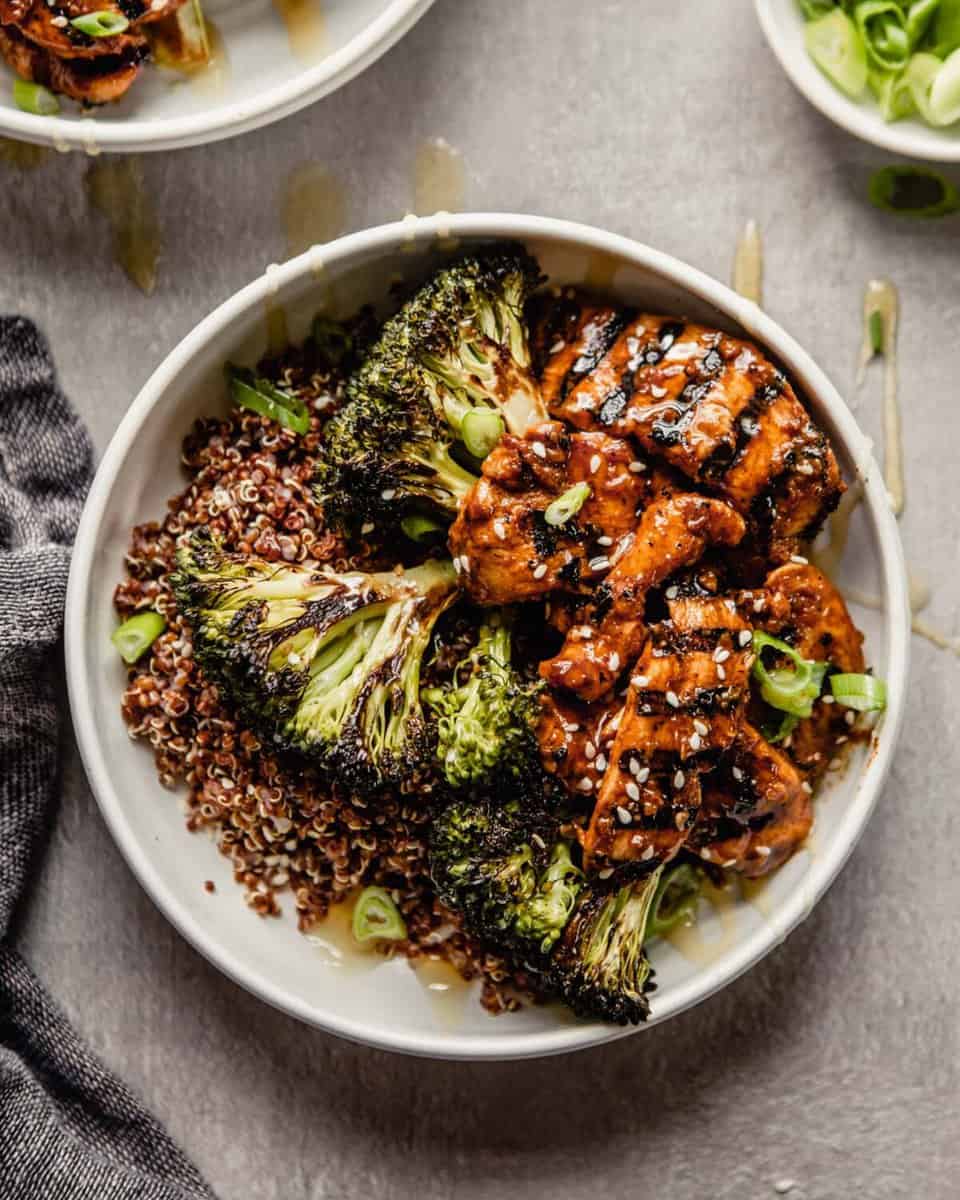Bulgogi Bowls! Tender bulgogi beef or chicken tossed in a flavorful sauce and piled over quinoa with roasted broccoli and a drizzle of honey. Simple, delicious, and so satisfying! Add this to your regular rotation and mix and match different grains, vegetables, and toppings.
What is bulgogi?
Bulgogi, a Korean dish, translates as “fire meat.” Generally, bulgogi is made with tender cuts of beef, but it can also be made with pork and chicken. The process of making bulgogi varies widely from region to region. This recipe follows the general process and idea, but it does have haracteristics that keep it from being super traditional.
Classic bulgogi features tender beef (or chicken or pork) sliced very thin and marinated in a sweet and savory mixture. The marinated beef is then cooked quickly over high heat (or stir fried) and served with rice and perilla leaves. For my version, which is less traditional, I serve it in bibb lettuce leaves with rice, kimchi, and green onions. If you can find perilla leaves, I encourage you to give those a try!
Learn more about the history and evolution of Bulgogi and Korean cuisine.
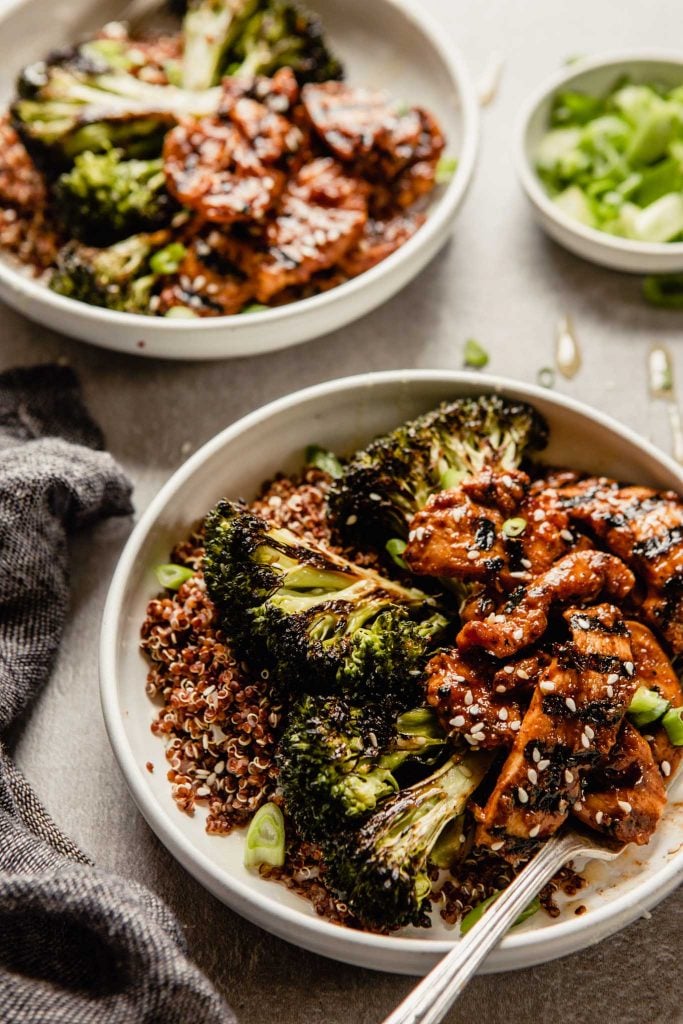
Bulgogi Marinade
The marinade for bulgogi varies, but traditionally it consists of black pepper, garlic, onion, ginger, sesame oil, sesame seeds, soy sauce, sugar and rice wine (mirin). Oftentimes Asian pear or pear juice is added as well—it contains a tenderizing enzyme. My marinade for Korean beef bulgogi is slightly different and therefore, less traditional.
For the marinate you’ll need:
- low-sodium soy sauce (or tamari if gluten-free)
- grated white or yellow onion
- honey (or brown sugar)
- gochujang, or gluten-free gochujang if needed
- garlic
- ginger
- mirin or rice wine
- toasted sesame oil
- cracked black pepper
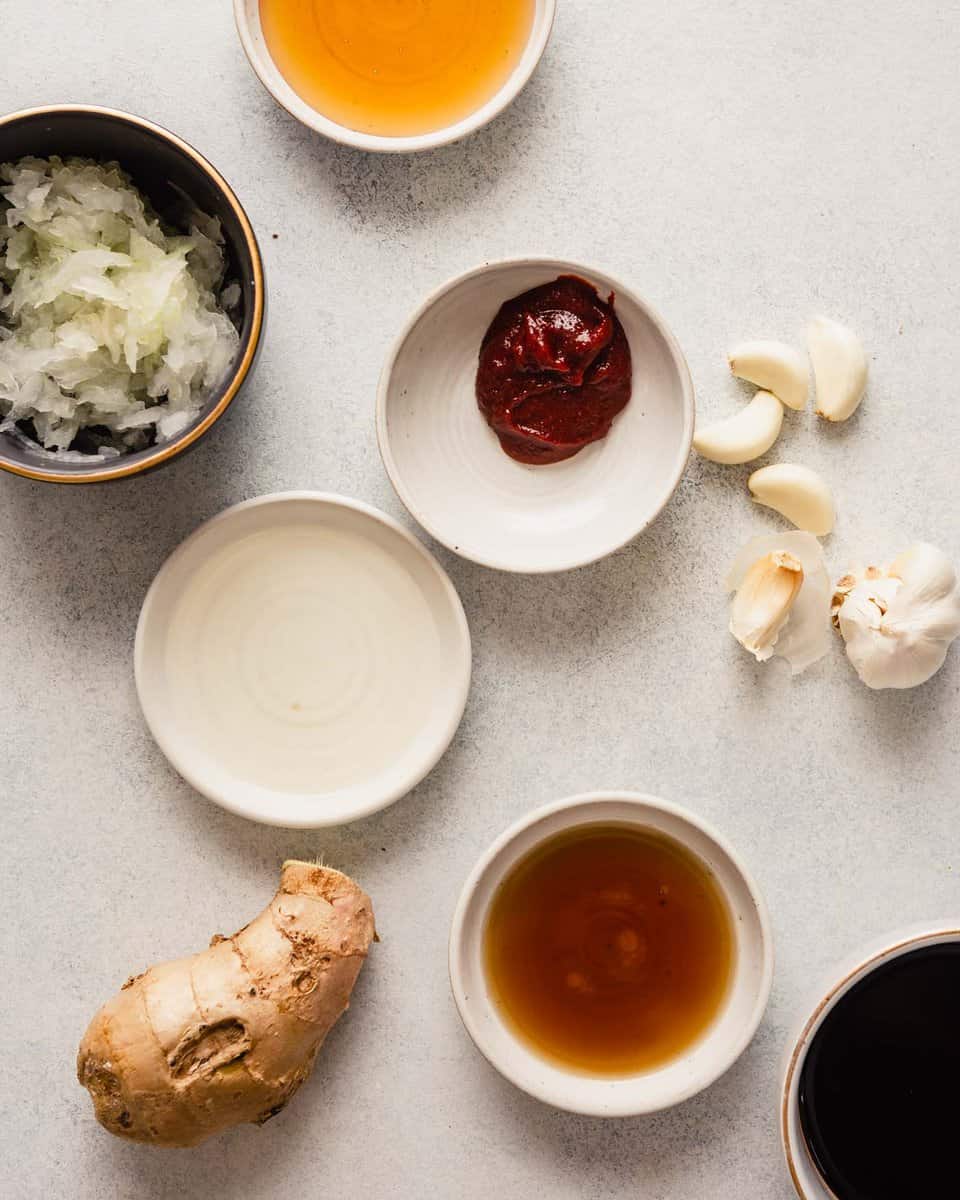
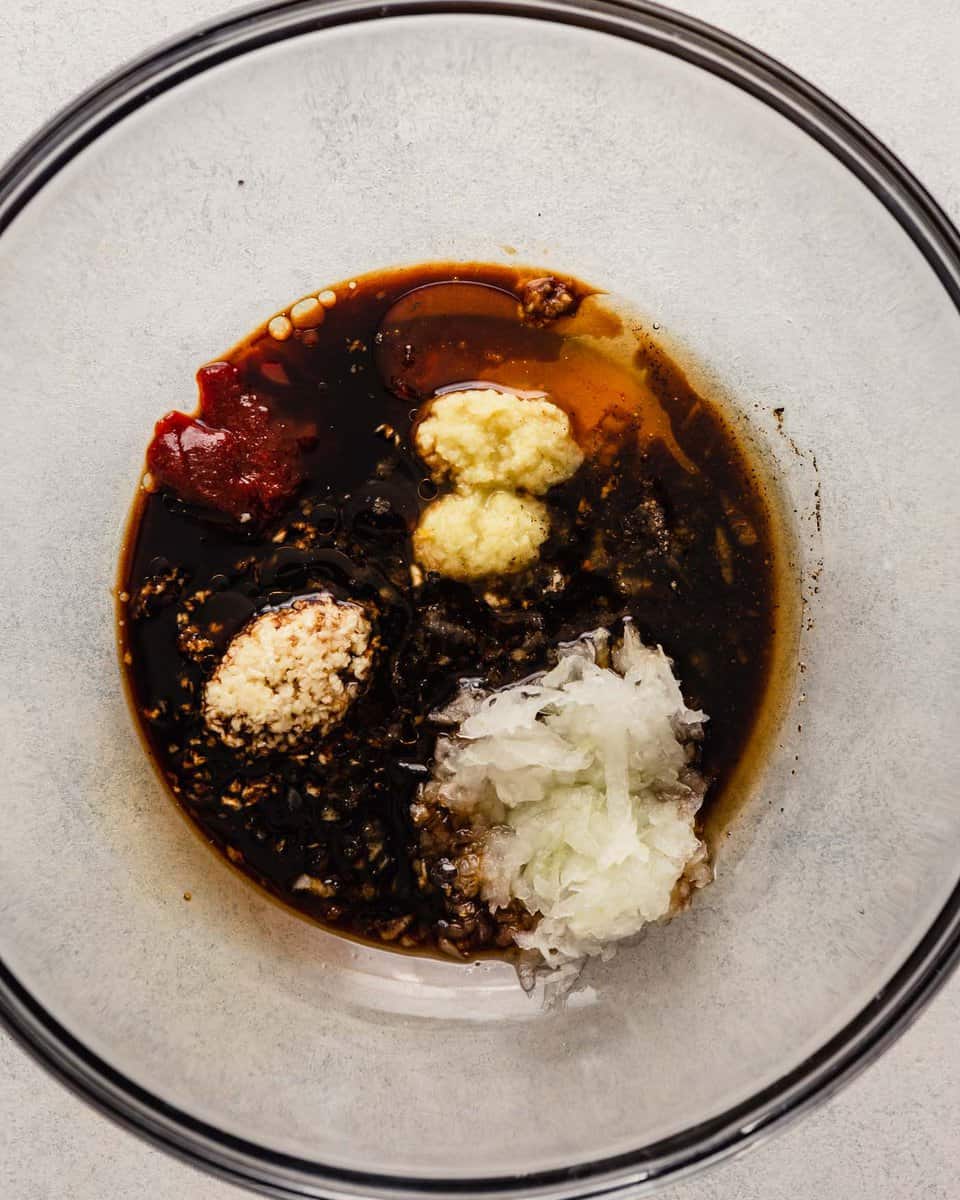
Beef Bulgogi Bowl or Chicken Bulgogi Bowl
Or both! Why choose? Really though, chicken or beef will work beautifully in these bulgogi bowls. Neither is easier than the other and neither is quicker—it all comes down to preference.
If you’d like something lighter, opt for chicken. Thighs or breast will work, but breast will be the leanest.
Beef bulgogi tends to be a bit more decadent, and because of that, I’d argue a bit more delicious. For beef bulgogi bowls, use a top sirloin or boneless ribeye.
Check out both of my bulgogi recipes and use whichever works for you!
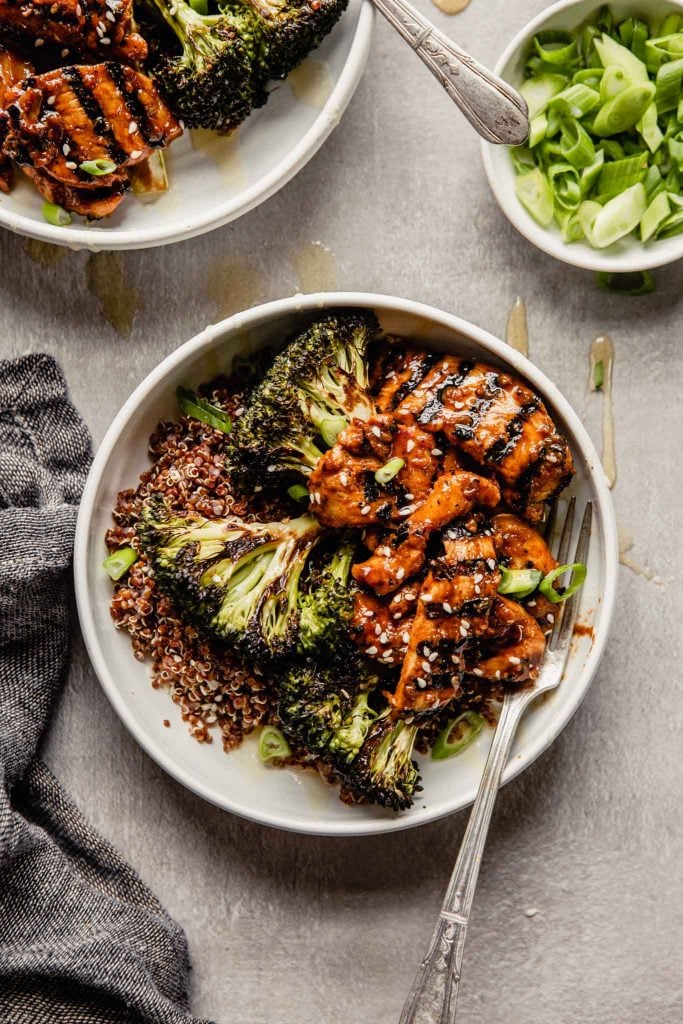
What kind of grains to use
It all depends on preference and what you’re going for. I like to make grain bowls with nutritionally-dense grains like quinoa (technically a seed), freekeh, bulgur, barley, and farro, but you can certainly use white or brown rice too.
If you’re looking to keep this super traditional, opt for a long-grain white rice such as jasmine or basmati.
Add some roasted veg
Every grain bowl needs some kind of vegetable. For these bulgogi bowls I opted for roasted broccoli as it requires hardly any prep work and all of the cooking is hands-off (the beauty of roasting).
Grain bowls are ideal for busy weeknights and meal prep because nearly every component can be modified. If you’ve got green beans on hand instead of broccoli, use that instead! Prefer zucchini? That would be great! Use what you’ve got, use what you like.
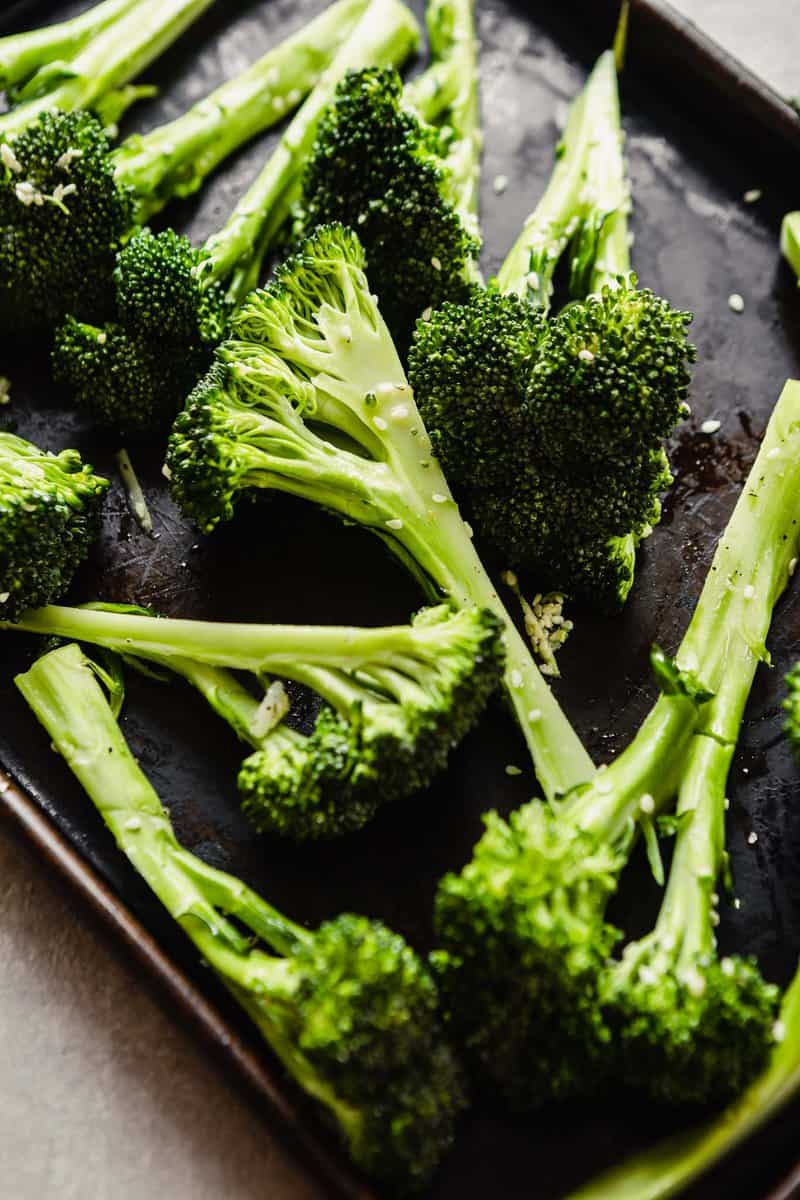
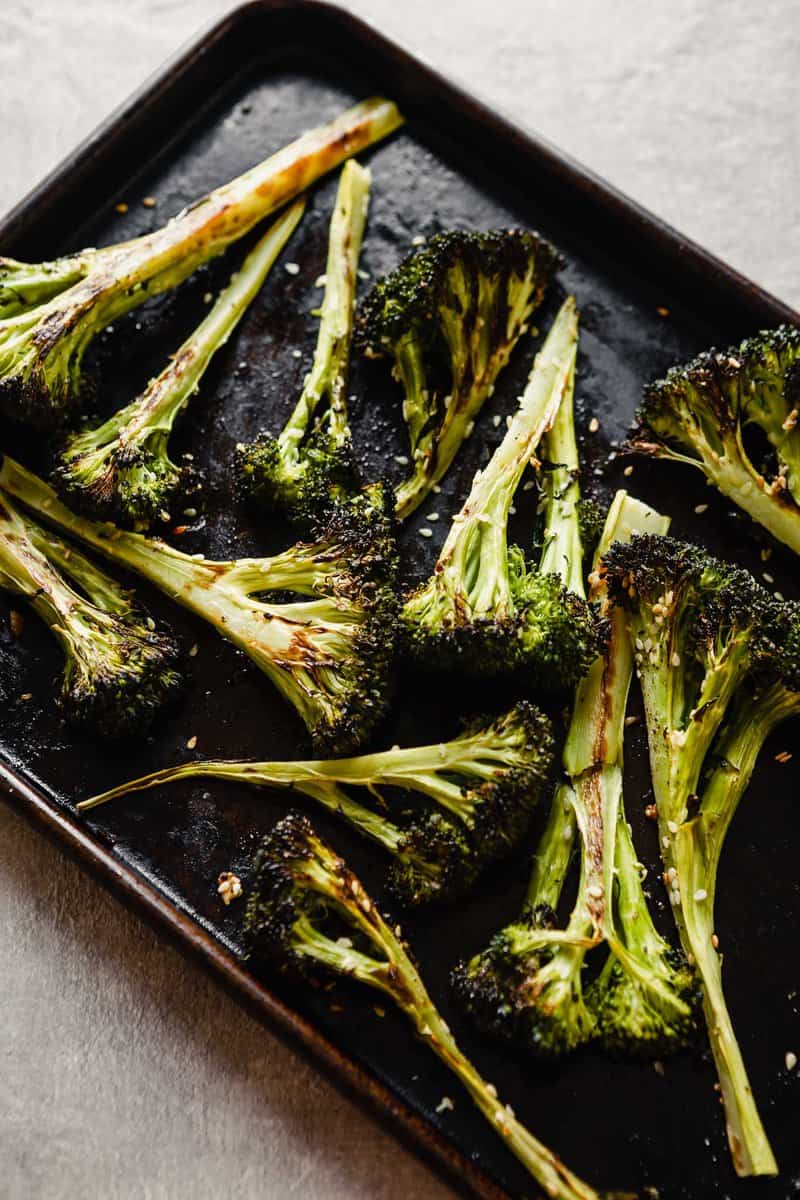
Topping ideas
- Honey—yes! Honey is not traditional for bulgogi, but a little bit drizzled over top right before serving is FIRE! It is so good!
- Pickled cucumbers—I love to use my quick pickling method to make pickled cucumbers. And instead of using a regular cucumber, use an English cucumber thinly sliced (no peeling necessary).
- Fried egg—nearly all grain bowls can benefit from being topped with a fried egg. And these bulgogi bowls are no exception!
- Shredded carrot—add to the bowl either raw or lightly sautéed.
- Perilla leaves—perilla leaves are traditionally served with bulgogi. For grain bowls I like to chop them up and toss them with the grain before adding the toppings. If you can’t find perilla leaves, use romaine lettuce or butter lettuce.
- Kimchi—you just can’t ever go wrong with some kimchi!
You May Also Like…
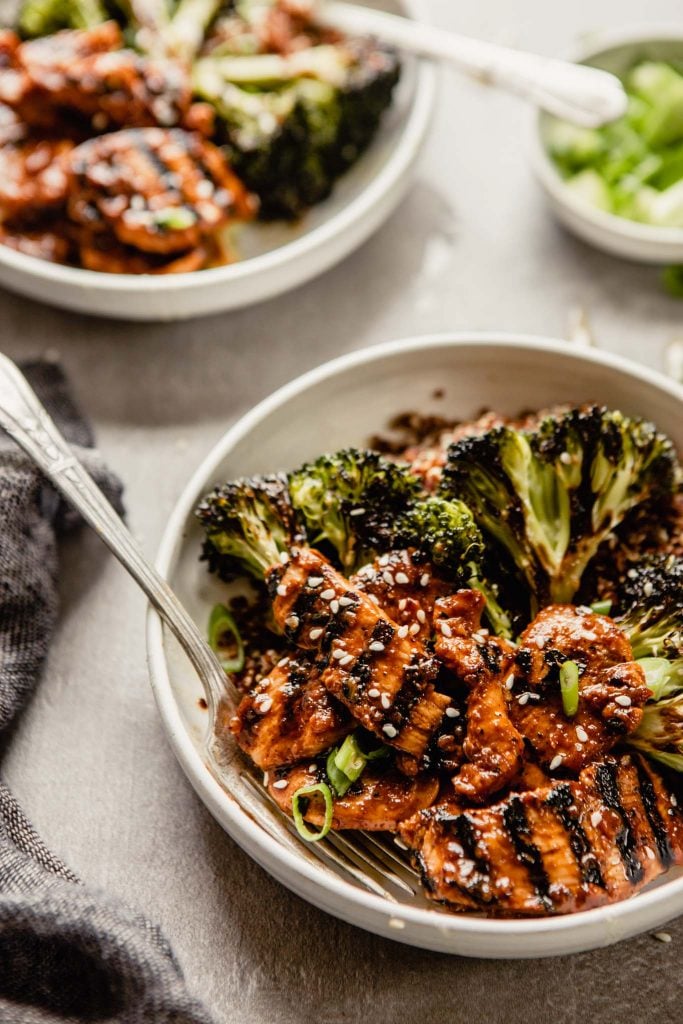
Make sure to tag me @ZESTFULKITCHEN ON INSTAGRAM or tag #zestfulkitchen on social media if you make a recipe!
Don’t forget, if you make these chicken or beef bulgogi bowls, leave a comment and rating below!
To pin this recipe and save it for later, you can click the button on any of the photos, or the red button on the bar below the recipe. Happy cooking!
Bulgogi Bowls with Quinoa and Roasted Broccoli
Description
Ingredients
- 1 cup dry quinoa
- Toasted sesame oil
- Kosher salt and black pepper
- 1 pound broccoli
- 2 teaspoons grapeseed or olive oil
- 1 recipe chicken bulgogi or beef bulgogi marinade reserved
- Green onions sesame seeds and honey for serving
Instructions
- Rinse quinoa with cold water in a fine-mesh strainer; drain.
- Add quinoa and 2 cups water to a saucepan over medium-high; bring to a boil then decrease heat to medium-low and maintain a gentle simmer. Cook until quinoa has absorbed all of the water, 10–15 minutes. Reduce heat as needed throughout cooking to maintain a gentle simmer.
- Remove pot from heat, cover, and let quinoa steam for 5 minutes. Remove lid and fluff quinoa with a fork. Season with toasted sesame oil, salt and black pepper to taste.
- Heat oven to 425ºF (218ºC); line a baking sheet with oil and coat with nonstick cooking spray.
- Trim tough ends of broccoli and peel stems; cut broccoli head, lengthwise, into long quarters. Toss broccoli with grapeseed oil and season lightly with salt; arrange in a single layer on prepared sheet. Roast broccoli until fork-tender and charred, 20–25 minutes.
- Meanwhile, cook bulgogi according to recipe instructions (click here for chicken bulgogi, or click here for beef bulgogi). Transfer marinade to a small saucepan; bring to a boil over medium-high heat and cook until slightly thickened, about 3 minutes. Toss cooked meat with reduced sauce to coat.
- Divide quinoa between serving bowls, top with broccoli and bulgogi. Sprinkle with scallions, sesame seeds, and a drizzle of honey.
